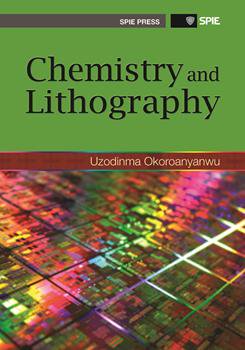|
The interaction of exposure radiation with amorphous solid films of resists and their constituents leads to distinct photophysical and photochemical processes that in turn underlie the basis of the contrast between the exposed and the unexposed sections of the resist film. A short section of this chapter is therefore devoted to the rudiments of photochemistry and photophysics of amorphous solid resist films. We can only provide here the most basic information required for understanding the subject. It is necessary to introduce some terminology here. When the radiationsensitive components of resists-the resins and components-are irradiated, they can absorb the energy and in turn get excited. It is the excited-state form of the radiation-sensitive components of the resist that plays the central role in these processes. These excited states of the molecules are identified by their multiplicity (the overall spin of the electrons in that state), by their molecular orbital character (indicating the involvement of π, n, σ, or other orbitals in the excitation process), and by their energy in relation to the energy of the ground state. The relevant excited states of a molecule include the singlet S1 and triplet T1, and are typically represented in a state diagram that shows their energy levels relative to the ground state singlet S0. A good way to picture the singlet and triplet states is to consider the configuration of a pair of 1s orbital electrons in the ground state, represented as 1s2. When excited, one of these electrons may be promoted into a 2s orbital, giving the configuration 1s12s1. The two electrons need not be paired since they occupy different orbitals. According to Hund's rule of maximum multiplicity, the state of the atom or molecule in which the spins are parallel (↑↑) lies lower in energy than the state in which they are antiparallel or paired (↑↓). Both states are permissible, and can contribute to the photochemistry and photophysics of the atom or molecule. |
|
|


